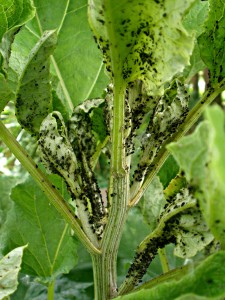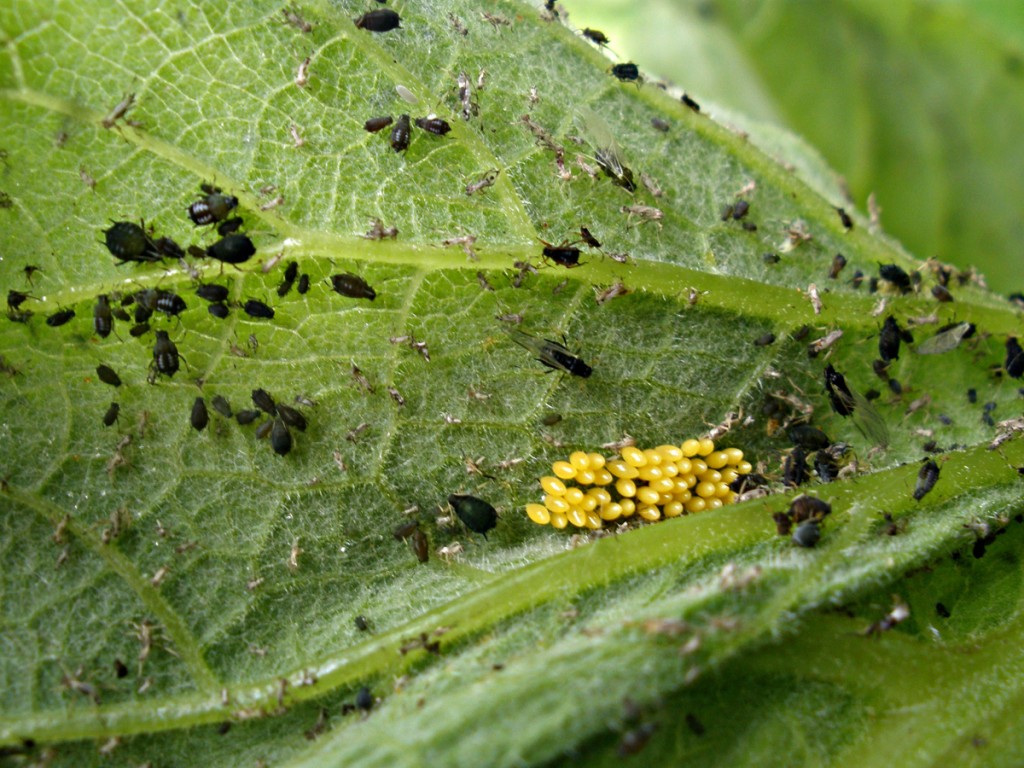Turning Over an Old Leaf
Posted in Interesting Plant Stories on August 24, 2015 by Ansel Oommen
Ansel Oommen is a freelance writer, artist, and research assistant for the Research Foundation for Mental Hygiene at Columbia University Medical Center. For the last year, he has been a volunteer at the William and Lynda Steere Herbarium at The New York Botanical Garden.

In one way or another, I have been involved with the world of plants and insects since early childhood. So when I heard about the volunteering opportunities available at The New York Botanical Garden, I knew exactly how I wanted to spend my spare time.
Under the guidance of Project Coordinator Mari Roberts, I worked on herbarium records for the Tri-Trophic Thematic Collection Network (TTD-TCN). The TTD-TCN is an ambitious database that connects universities, museums, botanical gardens, and other partners to organize and study records pertaining to plant-insect relationships, particularly those of the “true bugs” (the insect order Hemiptera, which includes aphids, cicadas, and leafhoppers, among others), their host plants, and the insects that parasitize the true bugs (the order Hymenoptera, which includes wasps, bees, and ants).
This project held distinct meaning because it was not the first time that I had encountered such complex interactions Last summer, I reared dozens of cabbage white caterpillars (Pieris rapae) to adulthood. In the process, I discovered that their host plant, kale, was also home to an interesting array of multi-legged denizens, including the cabbage aphid (Brevicoryne brassicae), the larvae of the diamondback moth (Plutella xylostella), predatory hoverfly larvae, and the parasitoid wasp Cotesia glomerata. I watched with both awe and horror as multiple wasp pupae erupted out of one caterpillar and how, subsequently, its behavior changed.
This time, however, I would be focusing on the plant side, on members of the Aster family. Initially, I worked on species in the genus Arctium, otherwise known as burdock. My main task here was to peruse scanned records of Arctium specimens and to enter key data such as the collector name, date, and geographical information into the TTD-TCN database. It became very apparent that I was not only piecing together the past, but I was also becoming a part of history itself.
Every so often, I would encounter a specimen from the 1800s or the early 1900s, where it was safe to assume that the original collector had passed away. And yet, I was keenly reminded that their life was immortalized in both paper and, now, the digital space, somehow linking their narratives with mine. Reading through the record anecdotes, I found myself reliving their memories.

As usual, like so many years before, I spent the summer observing the magical world of plants and insects. Around the same time that I was working on these records, I came across a massive specimen of wooly burdock (Arctium tomentosum) growing in Flushing, Queens. Aptly named after the hairy undersides of the leaves, this plant was infested with the black bean aphid (Aphis fabae), a member of the true bugs.
Underneath the leaves, a complex war was going on. Right in the middle of the infestation were several batches of ladybug eggs; ladybugs are a common predator of aphids. Adding to the drama were a few hoverfly larvae, lacewing larvae and tiny black parasitoid wasps, stirring panic among the swarm. A whole intricate world of chemical and biological checks and balances was unfolding before my eyes between the host plant, its predator, and the predators of its predator, lending credence to the phrase, “the enemy of my enemy is my friend”—well, at least from the burdock’s perspective.
Highlighting the dynamics of these three trophic levels, this experience validated the need for an ambitious project like TTD-TCN to bring vast amounts of data together and for interested individuals, like me, to be a part of it. There are so many questions to be asked, so many answers to be unearthed. But I have found that sometimes the best place to start is simply by turning over an old leaf.
To learn more about the author’s writing and art work, go to: https://www.behance.net/Ansel

